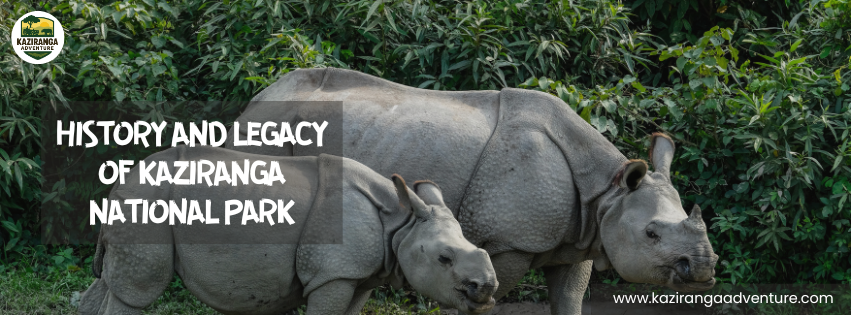Kaziranga National Park, located in Assam, India, is one of the most iconic wildlife reserves in the world. Famous for being the home of the Great Indian One-Horned Rhinoceros, Kaziranga is more than just a wildlife destination—it is a story of conservation, heritage, and resilience. Recognized as a UNESCO World Heritage Site in 1985, the park stands as a symbol of India’s successful wildlife preservation efforts.
In this blog, let’s explore the history and legacy of Kaziranga National Park, and understand why it holds such an important place in India’s natural and cultural heritage.
The Origins of Kaziranga
The roots of Kaziranga’s history date back to the early 20th century. In 1904, Lady Curzon, the wife of Lord Curzon (the then Viceroy of India), visited the region and expressed concern over the dwindling population of the one-horned rhinoceros, which was on the verge of extinction due to hunting and poaching.
Her efforts inspired the creation of a protected area in 1905, initially as a proposed reserve forest covering 232 sq. km. This marked the beginning of Kaziranga’s journey as a wildlife sanctuary.
Evolution into a National Park
Over the years, Kaziranga’s status evolved to strengthen its protection:
1908 – Declared as a Reserve Forest.
1916 – Upgraded to a Game Sanctuary.
1950 – Renamed as a Wildlife Sanctuary to remove the hunting image.
1974 – Officially declared as Kaziranga National Park, covering over 430 sq. km.
1985 – Inscribed as a UNESCO World Heritage Site for its unique natural environment and significant biodiversity.
Today, Kaziranga spreads across over 1,000 sq. km, including buffer zones and extensions, making it one of India’s largest national parks.
The Legacy of Conservation
Kaziranga is celebrated worldwide for its remarkable conservation success story. At the beginning of the 20th century, fewer than 200 one-horned rhinos survived. Today, thanks to dedicated protection measures, Kaziranga is home to over 2,400 rhinos, making it the single largest population of this species in the world.
The park is also part of Project Tiger, and is recognized as an Important Bird Area (IBA), hosting migratory birds such as pelicans, storks, and eagles.
Cultural and Historical Significance
Kaziranga is not only about wildlife—it is deeply connected with Assamese culture and folklore. The name "Kaziranga" is believed to have originated from two local words: Kazi (a village girl) and Ranga (a young man), symbolizing a tragic love story.
The park also finds mentions in Assamese songs, poems, and local traditions, reflecting the close bond between nature and people in this region.
Challenges Over Time
Despite its success, Kaziranga faces ongoing challenges:
Flooding of the Brahmaputra River, which displaces wildlife every year.
Human-wildlife conflict in surrounding villages.
Poaching, especially targeting rhinos for their horns.
Pressure from tourism and encroachment in buffer areas.
Authorities, NGOs, and local communities continue to work together to preserve the park’s legacy for future generations.
Why Kaziranga’s Legacy Matters
Kaziranga’s history is not just about protecting rhinos—it’s about conservation at scale, balancing wildlife, ecosystems, and communities. Its success inspired other conservation projects in India and abroad, making it a global model of wildlife preservation.
Visiting Kaziranga today is not only an adventure but also a journey into a living legacy—one that began over a century ago and continues to inspire.
Conclusion
The history and legacy of Kaziranga National Park highlight its transformation from a hunting ground to a world-renowned conservation site. From the efforts of Lady Curzon to modern-day wildlife protection, Kaziranga is a shining example of how dedicated efforts can revive endangered species and ecosystems.
For travelers, Kaziranga is more than just a safari—it’s an opportunity to witness a legacy of heritage, resilience, and hope for wildlife.
